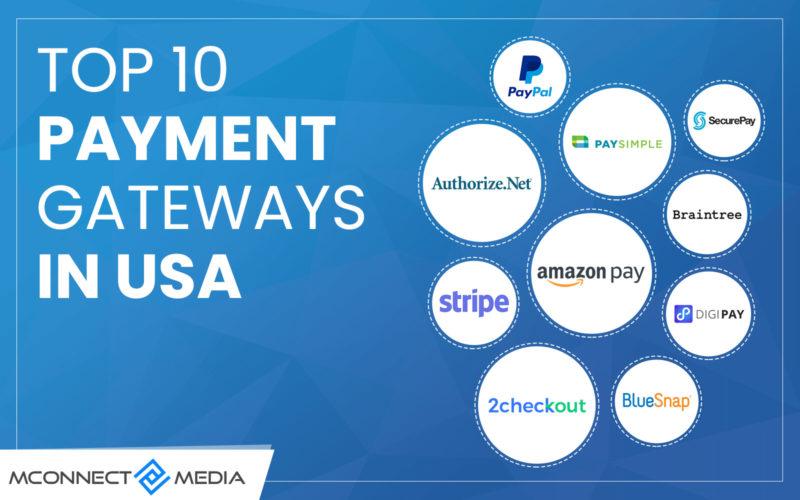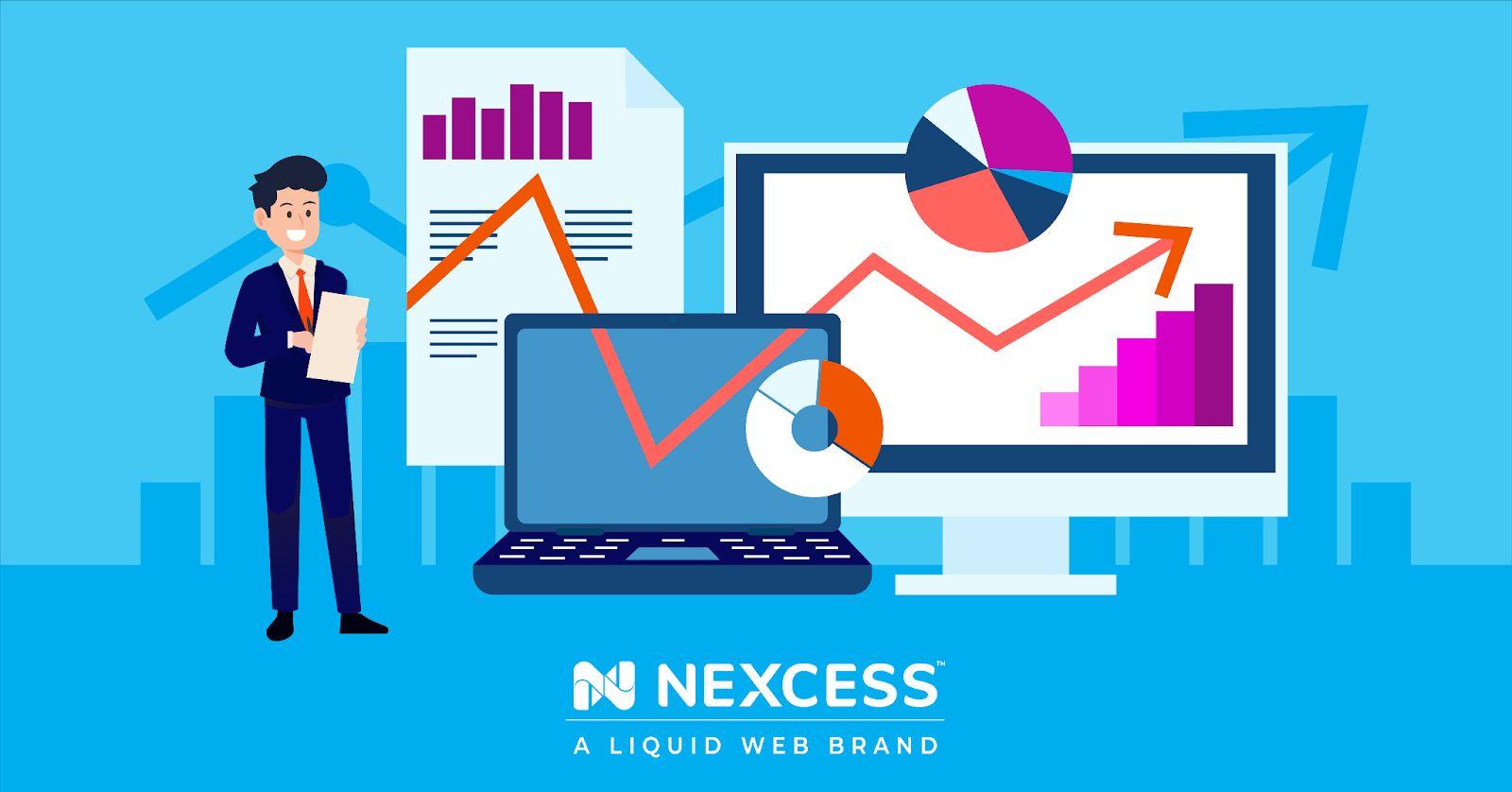Are you ready to turn your passion for writing into a profitable online venture? If so, you’re in the right place! In today’s digital landscape, selling eBooks is not just a dream—it’s a reality that anyone can achieve, especially with the power of WordPress at your fingertips. Welcome to “How to Sell eBooks on WordPress: The Complete 2025 Guide,” where we’ll walk you through every step of the process,from creating your eBook to setting up an attractive storefront and driving traffic to your site.
Whether you’re an aspiring author, a seasoned writer, or an expert in a specific niche, this guide is tailored for you. We’ll share tips,tools,and strategies that will help you navigate the world of eBook sales effectively. Imagine not only sharing your knowledge and creativity with the world but also earning a steady income from your work.Sounds exciting, right? Let’s dive in and get you started on your journey to eBook success with WordPress!
Understanding the eBook Market and Why WordPress is Your best bet
When diving into the world of digital publishing, understanding the eBook market is crucial for anyone looking to make a mark. Over the past few years, the demand for eBooks has skyrocketed, fueled by the increasing use of smartphones, tablets, and dedicated e-readers. Readers now prefer to carry entire libraries in their pockets, and this has created a vibrant marketplace for authors and publishers alike.
Choosing the right platform is essential to your success, and that’s where WordPress shines. This versatile content management system offers a range of features that cater specifically to eBook sales:
- user-Friendly Interface: With its intuitive dashboard, even those without technical skills can easily set up an online store.
- Extensive Plugin Library: From eCommerce solutions like WooCommerce to marketing tools, the plugin ecosystem allows you to extend your site’s functionality effortlessly.
- SEO Optimization: WordPress is built with search engine optimization in mind, helping your eBooks get found in a crowded marketplace.
- Customizable Design: Choose from thousands of themes to create a unique, branded experience that reflects your style.
Moreover, the eBook market is not just about selling; it’s about building a community. WordPress allows you to integrate blogging, membership areas, and forums, fostering engagement with your readers. By sharing valuable content related to your eBooks, you can establish authority in your niche and keep your audience coming back for more.
to illustrate the potential of the eBook market and the advantages of using WordPress, consider the following table highlighting key market statistics:
| Statistic | Value |
|---|---|
| Global eBook Market Size (2025) | $20 billion |
| Percentage of Readers Preferring eBooks | 57% |
| Average Price of an eBook | $9.99 |
| Growth Rate (CAGR 2020-2025) | 3.5% |
Additionally, leveraging eBook sales on WordPress can lead to significant passive income. Think of your eBook not just as a product, but as a gateway to additional revenue streams. By integrating affiliate marketing, online courses, or exclusive content for subscribers, you can maximize your earning potential.
the eBook market presents a wealth of opportunities, and with WordPress as your platform of choice, you’re equipped to navigate this dynamic landscape effectively. With its robust features, ease of use, and community-building capabilities, WordPress is undeniably your best bet for launching and sustaining a successful eBook business.
Setting Up Your WordPress Site for eBook Sales
can be an exciting journey, transforming your passion for writing into a thriving online business.The first step is choosing the right eCommerce plugin. Popular options like woocommerce or Easy Digital Downloads allow you to manage digital products seamlessly. These plugins simplify payment processing, inventory management, and customer interactions, ensuring a smooth experience for both you and your buyers.
Once you’ve selected your eCommerce plugin, it’s time to optimize your site’s layout for eBook sales. this involves creating a dedicated sales page for each eBook. Here are some key elements to include:
- Compelling Book Description: Craft an engaging blurb that summarizes the eBook’s content and highlights its benefits.
- Eye-Catching Cover Image: Visuals play a crucial role—use a professional cover design to attract potential buyers.
- Call-to-Action (CTA): Encourage visitors to buy with clear and persuasive CTAs, such as “Buy Now” or “get Your copy Today!”
Next, you’ll want to set up payment gateways. Most eCommerce plugins support multiple gateways like PayPal, Stripe, or credit card processing.Ensure you choose options that are widely trusted and secure, as this will give your customers confidence when making a purchase.
don’t overlook the importance of SEO optimization for your eBook pages. Use relevant keywords in your descriptions, titles, and meta-tags to enhance visibility in search engines.Additionally, consider creating blog posts related to your eBook’s topic; this can drive traffic to your sales page and establish you as an authority in your niche.
ensure you have a solid customer support system in place. Whether it’s through email, a dedicated support page, or a live chat feature, being accessible to your customers helps build trust and enhances their buying experience.
choosing the Right eBook Format for Your Audience
When diving into the world of eBooks, selecting the right format is crucial for reaching your target audience effectively.Each format comes with its unique set of advantages and limitations. Understanding these can help you make an informed choice that enhances reader experience and maximizes sales.
Here are some popular eBook formats you should consider:
- EPUB: This is the most widely supported eBook format, compatible with most eReaders, tablets, and smartphones. It allows for reflowable text, ensuring a pleasant reading experience across different devices.
- MOBI: primarily used by Amazon Kindle devices, MOBI files are ideal if you’re targeting Kindle users. Though, note that this format is not as versatile as EPUB.
- PDF: A staple for many authors, PDFs preserve the original layout and design of your eBook, making them great for visually rich content. However, they may not adapt well to different screen sizes.
- AZW: This is Amazon’s proprietary format that offers features like digital rights management (DRM) to protect your content. If you plan to sell on Kindle, this format is essential.
Choosing a format also involves considering your audience’s reading habits. Are they more inclined to read on mobile devices, tablets, or dedicated eReaders? Conducting audience research can definitely help you determine their preferences. For instance, if your readers are predominantly kindle users, focusing on MOBI or AZW formats might yield better results. Conversely, if you’re targeting a broader audience, offering your eBook in EPUB may increase accessibility.
Additionally,think about the content of your eBook. If it includes many images,charts,or elaborate formatting,a PDF might serve you best. Conversely, if it’s primarily text-based, EPUB will ensure a cleaner reading experience across various devices.Consider this table for a speedy comparison:
| Format | Best For | Compatibility |
|---|---|---|
| EPUB | General readers, versatile content | Most eReaders, tablets, smartphones |
| MOBI | Amazon Kindle users | Kindle devices only |
| Visual content, print-ready formats | All platforms but less flexible | |
| AZW | Kindle users with DRM needs | Kindle devices only |
Ultimately, the right eBook format will depend on your specific goals and the needs of your audience. By aligning your format choice with reader preferences and content type, you’ll pave the way for increased engagement and sales success.

Creating Eye-Catching eBook Covers That Sell
When it comes to eBooks, the cover is frequently enough the first thing potential readers will see.This makes it crucial for your cover design to be both appealing and representative of the content within. Here are some essential tips to help you create a cover that not only captures attention but also drives sales:
- Know Your Audience: Understand who your target readers are. Tailor your design to resonate with their tastes and preferences. A cover that appeals to young adults will differ significantly from one aimed at professionals.
- Use High-Quality Images: A blurry or pixelated image can detract from your eBook’s professionalism. Invest in high-resolution images or graphics that complement your content effectively.
- Typography Matters: choose fonts that are both readable and stylish. The title should be prominent enough to stand out even in smaller thumbnail views. Consider using contrasting colors to enhance visibility.
- Color Psychology: Colors evoke emotions and influence perceptions. Use color schemes that align with the themes of your eBook.For example,blues can convey trust,while reds might evoke excitement.
- Keep It Simple: Avoid cluttering your cover with too many elements. A clean,straightforward design often leaves a stronger impact than a complex one.
To further illustrate effective design choices, here’s a quick comparison of successful eBook covers:
| Cover Element | Successful Example | Impact on Sales |
|---|---|---|
| Color Scheme | Minimalist Black & White | Increased reader engagement |
| Image Type | Illustrated vs. Photographic | Appeals to genre-specific audiences |
| Font Style | Modern Sans-serif | Enhanced readability |
don’t forget about the importance of testing your cover design. Consider conducting surveys or A/B testing to see which cover resonates more with your audience. getting feedback can provide invaluable insights and help you refine your design before launching your eBook to the world.

Integrating Payment Gateways for Seamless Transactions
When it comes to selling eBooks on WordPress, the payment gateway you choose can make or break your transaction process. Integrating a reliable payment system is crucial for ensuring that your customers have a seamless experience while purchasing your digital products. Thankfully, WordPress offers a variety of options that can cater to your needs.
To get started, consider these popular payment gateways:
- paypal: A trusted name in online payments, PayPal allows users to pay with credit cards or their PayPal balance, providing flexibility and security.
- Stripe: Known for its developer-friendly interface, Stripe supports recurring billing and has excellent customization options, making it a favorite for many online sellers.
- Square: Ideal for sellers who also have a physical presence, Square integrates both in-person and online sales effortlessly.
Integrating these gateways into your WordPress site can be accomplished with plugins that simplify the process. Here’s a quick overview of some plugins that can help:
| Plugin Name | Features | Best for |
|---|---|---|
| WooCommerce | Supports multiple payment gateways, easy setup | All-in-one eCommerce solution |
| Easy Digital Downloads | Focuses on digital products, built-in gateways | Selling eBooks and digital files |
| WP Simple Pay | No shopping cart needed, quick payments | Simple payment solutions |
Once you’ve selected a payment gateway and installed the appropriate plugin, configuring it should be straightforward. Most plugins will guide you through the process, ensuring that you can start accepting payments in minutes. However, be sure to test the checkout process thoroughly. A smooth experience can significantly enhance customer satisfaction and increase sales.
Remember to also consider the security of the payment methods you choose. Look for gateways that offer SSL encryption and comply with PCI standards. This not only protects your customers but also builds trust in your brand.
Lastly, don’t forget about the user experience. Ensure that the payment process is as streamlined as possible, minimizing the number of clicks needed to complete a purchase. A well-integrated payment gateway can greatly reduce cart abandonment rates and boost your overall sales performance.

Utilizing Plugins to Streamline Your eBook Sales Process
When it comes to maximizing your eBook sales on WordPress,leveraging plugins can significantly enhance your workflow and customer experience. With the right tools at your disposal, you can automate processes, manage inventory, and create a seamless purchasing journey for your readers. Here are some essential plugins that can definitely help you streamline your eBook sales process:
- Easy Digital Downloads (EDD): this powerful plugin is designed specifically for selling digital products. It allows you to create a full-fledged eCommerce store right on your wordpress site. You can manage customers, track sales, and even offer discount codes.
- WooCommerce: As one of the most popular eCommerce solutions for WordPress, WooCommerce can help you set up a robust online store. You can customize your checkout process and integrate various payment gateways to meet your customers’ needs.
- MemberPress: If you plan to sell eBooks as part of a membership site, MemberPress is the way to go. This plugin allows you to create subscription plans, restrict content access, and manage memberships effortlessly.
- Thrive Architect: Use this plugin to design eye-catching sales pages and marketing funnels. With its drag-and-drop interface, you can craft compelling layouts that convert visitors into buyers.
Once you’ve selected the plugins that best suit your eBook sales strategy, it’s crucial to ensure they work cohesively. Integrating your selected plugins can eliminate redundancies and provide a smoother experience for your customers. For example, if you’re using EDD for digital downloads, consider integrating it with your email marketing tool to automate follow-up emails for purchase confirmations and marketing campaigns.
Another great advantage of using plugins is the ability to gather valuable data. With tools like Google Analytics or MonsterInsights,you can track user behavior on your site.This data helps you understand which products are performing well and where your sales funnel may be leaking.
| Plugin | Main Feature | Best For |
|---|---|---|
| Easy Digital downloads | Digital product sales | General eBook sales |
| WooCommerce | Full-featured eCommerce | Physical and digital products |
| MemberPress | Membership management | Subscription-based sales |
| Thrive Architect | Page builder | Creating sales pages |
To further enhance your eBook sales process, consider implementing upselling and cross-selling strategies through your plugins. As an example, if a customer is about to purchase one eBook, suggest similar titles they might be interested in. This not only increases your average order value but also enhances the customer’s experience by providing them with tailored recommendations.
remember that ongoing optimization is key.Regularly review your sales data and feedback to tweak your approach.Experiment with different plugins, landing pages, and promotional strategies to see what resonates best with your audience.Utilizing the right plugins effectively will not only streamline your sales process but also contribute to your long-term success in the eBook market.

Crafting Compelling Product Descriptions That Convert
When it comes to selling eBooks on WordPress, your product description is your secret weapon. A well-crafted description can not only capture attention but also compel readers to click that “Buy Now” button. So, how do you write descriptions that resonate with your audience? Let’s dive into a few key strategies.
First and foremost, know your audience. Understanding who your readers are will allow you to tailor your language and highlight the features that matter most to them. Consider creating concise buyer personas that encapsulate their needs, desires, and pain points. This will help you frame your eBook’s benefits in a way that speaks directly to their interests.
Next, focus on the benefits, not just the features. While it’s critically important to mention what’s inside your eBook,such as the number of chapters or the type of content it covers,it’s even more crucial to explain how those aspects will benefit the reader. Instead of saying, “This eBook has 10 chapters,” you could say, “Unlock the secrets of effective marketing strategies with 10 actionable chapters designed to boost your sales!”
Additionally, use storytelling to create a narrative around your eBook. People love stories, and weaving a relatable tale can help potential buyers connect with your product on a personal level. Whether it’s about your journey in writing the eBook or a transformational experience that inspired it, a good story can spark curiosity and interest.
Another tactic is to include social proof. Testimonials,reviews,or endorsements from readers or industry experts can significantly enhance credibility. A simple table showcasing some glowing reviews can work wonders:
| Reviewer | Comment |
|---|---|
| Jane Doe | “This eBook transformed my understanding of digital marketing!” |
| John Smith | “Easy to read and full of practical advice. Highly recommend!” |
| Emily Johnson | “A must-read for anyone looking to boost their online sales.” |
don’t underestimate the power of keywords and SEO. Ensure that your description includes relevant keywords that potential buyers might use when searching for eBooks like yours. This will not only improve visibility but also help attract the right audience to your product page.
by combining these techniques, you can create product descriptions that not only inform but also inspire action. Remember, a compelling eBook description is the bridge between hesitancy and purchase, so take the time to make it impactful!

Implementing Effective Marketing Strategies to Boost Sales
To successfully increase your eBook sales on WordPress, it’s crucial to adopt marketing strategies that resonate with your target audience. Here are some effective approaches that can help you create buzz and drive sales:
- Leverage Social Media: Share snippets, quotes, and behind-the-scenes content on platforms like Instagram, Facebook, and Twitter. Engage with your audience through polls, Q&As, and live sessions to generate excitement.
- Email Marketing: Build a mailing list and send out newsletters featuring exclusive content, promotions, and updates about your eBooks. Personalization can significantly boost engagement rates.
- Content Marketing: Create a blog on your WordPress site where you can provide valuable insights related to your eBook topics.This not only demonstrates your expertise but also drives organic traffic to your sales page.
- Collaborate with Influencers: partner with influencers in your niche to reach a broader audience. A well-placed recommendation can lead potential buyers right to your doorstep.
Understanding your audience is key to tailoring your messaging effectively. Consider the following strategies:
| audience Segment | preferred Content Type | Best Marketing Channel |
|---|---|---|
| Students | Study Guides | Social Media |
| professionals | Industry Insights | Email Newsletters |
| Hobbyists | Tutorials | Blog Posts |
Additionally, consider implementing promotional strategies such as:
- Limited-Time Offers: Create urgency with flash sales or discounts for a short period. This tactic can encourage hesitant buyers to make a purchase.
- Bundle Products: Offer eBooks as part of a package deal. This not only increases the perceived value but also encourages customers to buy more.
- Free Samples: Provide a free chapter or a short version of your eBook. This allows potential customers to experience your writing style before committing to a purchase.
Lastly, tracking your marketing efforts will help you refine your strategies. Utilize tools such as Google Analytics and social media insights to monitor engagement levels and conversion rates.By understanding what works and what doesn’t, you can continually optimize your approach to maximize sales.

Building an Email List to Connect with Your Readers
One of the most effective ways to engage and grow your audience is by building an email list. this list serves as a direct connection to your readers, allowing you to share updates, promotions, and valuable content. Here’s how to create a robust email list that keeps your audience engaged and eager for more.
Choose the Right Email Marketing Tool: Selecting an email marketing platform is the first step in your email list-building journey. Consider tools that integrate seamlessly with WordPress,such as:
- Mailchimp: User-friendly with a generous free plan.
- ConvertKit: Perfect for creators with powerful automation features.
- ActiveCampaign: Great for those looking for advanced segmentation and analytics.
Create Irresistible Lead Magnets: To entice visitors to subscribe, offer something of value in return. This could include:
- Exclusive eBook: A free guide or resource related to your eBook topics.
- Monthly Newsletter: Insights, tips, and behind-the-scenes content.
- Discount Codes: Special offers exclusive to your subscribers.
Optimize Your Sign-Up forms: Make it easy for visitors to join your list. Place sign-up forms strategically across your site:
- In the sidebar of your blog posts.
- At the end of each article as a call-to-action.
- In a pop-up that triggers after a set time on the page.
Engage Your Subscribers: Once someone signs up, don’t let that connection fade.Create a welcome email series that:
- Thanks them for joining.
- Introduces them to your best content.
- Offers a special discount on your eBooks.
If you’re ready to take your email marketing to the next level, consider the following tips:
| Tip | Description |
|---|---|
| Segment Your List | Group subscribers based on their interests or behavior for targeted campaigns. |
| Test and Optimize | A/B test your subject lines and email content to improve open and click rates. |
| Consistency is Key | Regularly send out emails to keep your audience engaged and informed. |
By building a quality email list, you create a powerful channel to connect with your readers. Not only does this enhance your relationship with your audience, but it also drives sales and improves your eBook marketing strategy. Start today, and watch your community thrive!

Leveraging Social Media to Promote Your eBooks
In today’s digital landscape, social media has become a vital tool for authors looking to promote their eBooks effectively.By leveraging various platforms,you can reach a wider audience and create a buzz around your work. here’s how you can maximize your social media presence to skyrocket your eBook sales.
Identify Your Target Audience
understanding who your readers are is key. Take time to define your ideal reader profile, including:
- Age group
- Interests and hobbies
- preferred social media platforms
- Reading habits
Once you have a clear picture of your target audience, tailor your content to resonate with their preferences and habits. This targeted approach will enhance engagement and drive more traffic to your eBook listings.
Choose the right Platforms
Not all social media platforms are created equal when it comes to eBook promotion. Focus your efforts on platforms where your target audience spends the most time. Here are some popular options:
- Facebook: Great for building communities and sharing updates.
- Instagram: Perfect for visually showcasing your eBook cover and engaging with readers through stories and reels.
- Twitter: Ideal for quick updates, promotions, and engaging in conversations with readers and other authors.
- Pinterest: Useful for creating visual content that links back to your eBook sales page.
Create Engaging Content
To keep your audience interested, develop a content strategy that includes:
- Teasers: Share snippets or quotes from your eBook to pique curiosity.
- Behind-the-scenes content: Offer insights into your writing process or the inspiration behind your book.
- Interactive posts: Use polls,questions,or challenges to engage your audience and encourage participation.
- Visual assets: Invest in eye-catching graphics, including memes, infographics, and video trailers that highlight key themes of your eBook.
Utilize Paid Promotions
If budget allows, consider using paid advertising options available on various social media platforms. Targeted ads can help you reach specific demographics based on interests, location, and behavior. Here’s a simple comparison of ad options:
| Platform | Ad Type | Best For |
|---|---|---|
| Carousel Ads | Showcasing multiple aspects of your eBook | |
| Story Ads | Engaging visuals for quick promotions | |
| promoted Tweets | Driving conversation around your book | |
| Promoted Pins | Visual revelation and bookmarking |
Engage with your Audience
Social media is not just a platform for broadcasting; it’s about building relationships. Take the time to respond to comments, answer questions, and engage with other authors and influencers in your genre. Building a loyal community around your work will foster word-of-mouth marketing and encourage readers to share your eBook with their networks.
By implementing these strategies, you can effectively harness the power of social media to promote your eBooks. With persistence and creativity, you’ll not only increase your visibility but also boost your eBook sales efficiently.

Analyzing Sales Data to Improve Your Offerings
Understanding your sales data is crucial when it comes to refining your eBook offerings. It’s not just numbers; it’s a treasure trove of insights waiting to be unlocked. By diving deep into your analytics,you can discover what resonates with your audience,allowing you to craft products that truly meet their needs.
Start by evaluating key metrics such as:
- Total Sales: Track your overall sales to identify trends over time.
- <strongConversion Rates: See how many visitors are turning into buyers to assess your marketing effectiveness.
- <strongCustomer Feedback: Listen to what your readers are saying in reviews and comments.
- <strongRefund Rates: high refund rates might indicate issues with quality or mismatch in expectations.
Once you have this data, analyze it to pinpoint which eBooks are your best-sellers. Consider creating a simple table to visualize this data:
| eBook Title | Total Sales | Average Rating |
|---|---|---|
| mastering WordPress | 1,200 | 4.8 |
| SEO Essentials | 950 | 4.6 |
| Marketing Magic | 750 | 4.7 |
Such analysis allows you to identify patterns. Are certain genres selling better? Do seasonal trends influence customer behavior? Use this information to tweak your marketing campaigns, emphasize your best-performing titles, and explore creating bundles or upsells around popular themes.
Another effective strategy is to segment your audience based on purchase behavior. You can create targeted email campaigns for different segments, offering personalized recommendations or exclusive deals. For instance,if a customer bought a book on digital marketing,they might be interested in additional resources like a companion guide or a course on social media strategies.
don’t forget to keep an eye on your competitors. Analyzing their offerings and how they market their eBooks can provide valuable insights. You can learn what works, what doesn’t, and how you can differentiate your products to attract more readers. Stay nimble and adapt your strategies based on both competitive analysis and your own data.

Providing Stellar Customer Support to Enhance Satisfaction
exceptional customer support is a game changer in the digital marketplace. When you sell eBooks on WordPress, your audience expects not just quality content but also a supportive experience that makes their journey seamless. Here’s how to elevate your customer support to ensure satisfaction.
Responsive Interaction: Always prioritize quick and clear responses. Establish a system where inquiries are addressed within 24 hours. Consider using live chat tools or chatbots to provide immediate assistance for common questions. This immediacy can significantly enhance customer trust and satisfaction.
Complete FAQ Section: Create a dedicated FAQ page to cover common concerns and queries.this should include:
- Payment methods accepted
- How to access purchased eBooks
- Refund policies
- technical requirements for reading eBooks
By proactively answering these questions, you reduce the burden on your support team and empower customers to find solutions independently.
Personalized Support: Tailor your support to meet individual customer needs. Use their names in communication, acknowledge their specific concerns, and strive to solve problems that resonate with their unique experiences. This can transform a simple interaction into a memorable one.
Follow-Up Engagement: Don’t let customers disappear after a purchase. A simple follow-up email thanking them for their purchase and inviting feedback can go a long way. This not only opens the door for more communication but also shows that you value their opinions and satisfaction.
Feedback Loop: Implement a system for collecting customer feedback regularly. This can be through surveys or feedback forms post-purchase. Use this data to refine your offerings and support processes. Customers appreciate when they see changes based on their input, enhancing their overall experience.
| support feature | Benefit |
|---|---|
| Live Chat | Immediate assistance |
| FAQ Section | Self-service solutions |
| Personalized Emails | Stronger customer relationships |
| Feedback Surveys | Continuous improvement |
Frequently Asked Questions (FAQ)
Q&A: How to Sell eBooks on WordPress: The Complete 2025 Guide
Q: Why should I consider selling eBooks on WordPress?
A: selling eBooks on WordPress is a fantastic way to monetize your expertise and reach a global audience. With over 40% of websites built on WordPress, it’s a powerful platform that offers flexibility, ease of use, and a plethora of plugins to enhance your selling process. Plus, having your own site lends credibility and allows you to build a brand identity around your work!
Q: what do I need to start selling eBooks on WordPress?
A: First, you’ll need a WordPress website! Choose a domain name that reflects your niche, then sign up for hosting. After that, install a user-friendly theme that supports eCommerce, like Astra or OceanWP. Don’t forget to add essential plugins like WooCommerce for payment processing and an eBook delivery system. Once that’s set, you’re ready to create and upload your eBook!
Q: How do I format my eBook for sale?
A: Great question! Ideally, your eBook should be in PDF format—this is widely accessible and maintains your formatting.Make sure to include a compelling cover design, a table of contents, and any necesary images. Remember, the better it looks, the more professional your product will appear!
Q: What pricing strategy should I use for my eBook?
A: Pricing can be tricky, but it often depends on the value you offer and your target audience. Research similar eBooks in your niche to gauge market trends. You might start with a lower price to attract initial buyers and gather reviews, then gradually increase it as your audience grows. Don’t undervalue your work, but remain competitive!
Q: How can I drive traffic to my eBook sales page?
A: There are numerous strategies to attract visitors. Use SEO techniques to optimize your site for search engines. create engaging blog content related to your eBook that offers value and drives curiosity.Leverage social media platforms to share snippets of your eBook and connect with your audience. Consider running targeted ads on Facebook or Google to reach even more potential buyers!
Q: What’s the best way to promote my eBook on social media?
A: promotion is key! Share eye-catching visuals of your eBook cover along with compelling captions that highlight the benefits of reading it. Use relevant hashtags to increase visibility.Engage with your audience through Q&A sessions,live readings,or giveaways to create buzz. Collaborating with influencers in your niche can also give you an added boost!
Q: Can I use email marketing to sell my eBook?
A: Absolutely! Building an email list is one of the most effective ways to sell your eBook. Offer a free chapter or a related resource to entice sign-ups. Once you have a list, nurture your subscribers with valuable content, sneak peeks of your eBook, and exclusive launch offers. Personalize your emails to make your readers feel special—they’ll be more likely to buy!
Q: What if I am not tech-savvy? Can I still do this?
A: Definitely! While some tech knowledge can be helpful,many WordPress themes and plugins are designed to be user-friendly.There are countless tutorials and community forums to guide you. Plus, you can always hire a freelancer for initial setup if needed. The key is to take that first step and start learning!
Q: How can I track the success of my eBook sales?
A: Monitoring your sales is crucial! Use the built-in analytics in WooCommerce or Google Analytics to track visitor behavior and sales conversion rates. Pay attention to which marketing strategies yield the best results so you can refine your approach over time. Celebrate your wins—no matter how small!
Q: What’s the one piece of advice you’d give to someone just starting?
A: Don’t hesitate to share your knowledge with the world! There’s a reader out there waiting for your eBook. Focus on delivering value,keep learning and adapting,and most importantly,enjoy the process. Selling eBooks can be incredibly rewarding—not just financially, but also in the way it allows you to connect with others and make an impact. Go for it!
Feel free to use this Q&A in your article to engage your readers and help them navigate the exciting world of selling eBooks on WordPress!
wrapping Up
And there you have it! Selling eBooks on wordpress is not just a possibility; it’s an exciting possibility waiting for you to seize. By following the steps outlined in this guide,you’re not only setting yourself up for success but also joining a thriving community of authors and entrepreneurs who are making their mark in the digital landscape.
Remember, the key to selling eBooks effectively lies in understanding your audience, creating compelling content, and leveraging the right tools to maximize your reach. Whether you’re a seasoned writer or just starting out,the world of eBooks is vast and ripe with potential.
So, don’t wait! Dive in, start crafting your eBook, and use WordPress to share your passion with the world. Your readers are out there, eager to discover what you have to offer. With the right approach, you can transform your knowledge and creativity into a steady stream of income.
if you found this guide helpful,share it with fellow authors,and let’s build a vibrant community of eBook sellers together! Happy writing,and here’s to your success in the dynamic world of digital publishing!

